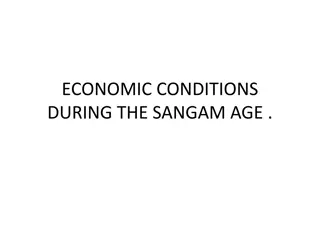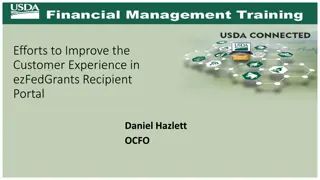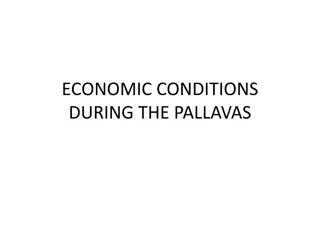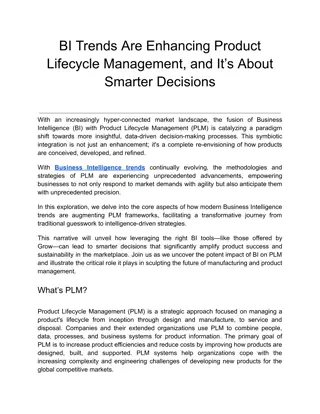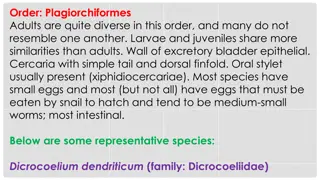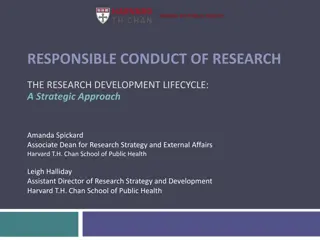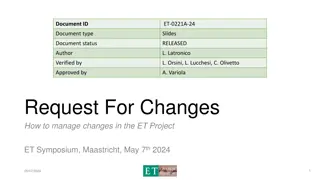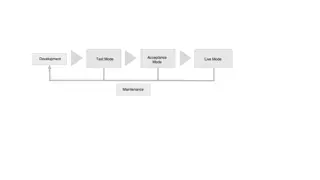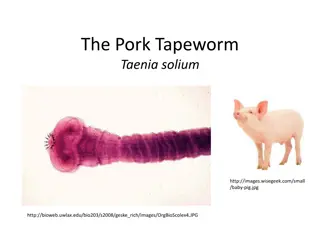Management of Paddy Stemborer: Economic Importance and Lifecycle Analysis
Paddy stemborer, also known as the yellow stem borer, is a significant pest affecting paddy crops in various regions of India. This pest exhibits a lifecycle involving egg laying, larval stages inside the plant stem, pupation, and emergence as adult moths. The economic impact of paddy stemborer infestation includes crop damage such as dead heart and white ear heads, leading to reduced yield. Understanding the bionomics and behavior of this pest is crucial for effective pest management strategies to mitigate crop losses and ensure agricultural sustainability.
Download Presentation

Please find below an Image/Link to download the presentation.
The content on the website is provided AS IS for your information and personal use only. It may not be sold, licensed, or shared on other websites without obtaining consent from the author. Download presentation by click this link. If you encounter any issues during the download, it is possible that the publisher has removed the file from their server.
E N D
Presentation Transcript
ECONOMIC IMPORTANCE OF PESTS BIONOMICS AND MANAGEMENT OF SELECTED INSECT PESTS OF CROP PADDY Dr.C.Esaivani Assistant professor, PG Department of Zoology Sarah Tucker College Tirunelveli
Paddy Stemborer : Scirpophaga incertulas It is a major pest of paddy and commonly known as yellow stem borer. Distribution: All paddy growing areas: West Bengal, Assam, Orissa, Tamil Nadu, Andhra Pradesh and Punjab. Host Plant: Only paddy, hence the pest called a monophagous pest. Appearance: The moth is 15-20mm in length and has a wing span of 24-45mm. Female moths are larger than the male having bright yellowish wings with distinct black spot on each forewing. The male moth has pale whitish yellow coloured forewing without any spot. Life-history: Life of paddy stem borer is completed with four stages-Adult, Egg, Larva and Pupa. Their life span is very short- 5-7 days.
Each female may lay 200-500 eggs in 2-5 clusters at the ventral surface of paddy leaf. Each egg cluster contains 60-100 fertilized eggs. Egg undergoes incubation for 6-8 days. After hatching black headed caterpillars come out. These caterpillars crawl and reach the central stem and make small bores and migrate within the central tissues. There they stay and pass larval life. Larval period lasts for 20-30 days with 6 stages. Mature larvae stops feeding and undergo pupal modification. During pupation mature larva encircles itself with the help of salivary silken threads called as cocoon. Duration of pupa is 3-12 days. After the completion of pupal duration, adult moth emerges.
Ecobehaviour of yellow stem borer: They are attracted to light, especially the females which come from as far a 5 miles. The female to male ratio is 2:1. There are four generations in a year. In West Bengal it shows abundance incidence during January to March in Rabi crop and during September to October in Kharif crop. It passes in hibernation during extreme cold weather.
Damage: damages to the crop. The infestation of the caterpillar shows the sign of dead heart and white ear head. Dead heart stage is referred to the sign of dried central shoot due to the infestation of yellow stem borer in young stage of the plant. Whenever the borer infestation is made during flowering stage, the ear heads dry up which are without grains. Then the inflorescence appears as white which is called white ear head . In Andhra Pradesh, due to the incidence of the pest, the loss of crop is estimated as 100-500kg/hectare. In northern states the loss is relatively less than the southern states as there are more generation of the pest than northern zone. The caterpillars or larvae of yellow stem borer cause serious
Prevention and Control: Physical control: Destruction of stubbles with fire so that liberating larvae are destroyed. After harvesting the field should be properly ploughed. Chemical control: Spraying of insecticides in the nursery field 15 days after sowing the seeds and in fields at 3-4 weeks intervals with 0.08% methyl paratheon, or 0.05% phosphamidon or 0.6% diazinon granules. Cultural control: Regular interculture and removal of weeds present adjacent to the cultivated fields should be made. The pest resistant varieties should be introduced. Rotation of crops should be followed.
Gandhi bug : Leptocorisa varicornis Distribution: It is widely distributed in India. Host Plant: Paddy, maize, jowar, sugarcane etc. Appearance: Adults are slender, long (20 mm) and greenish-brown in colour. It emits a strong foul smell, hence it is called Gandhi bug . It has long legs, 4-jointed antennae and 3- jointed tarsi. Life cycle: Rice bug completes its life-cycle with three stages- Egg, Nymph and Adult. They reproduce throughout the year on grasses and on other green vegetables on which they live. The males are capable of mating shortly after emergence.
Eggs: Each female lays 24 to 30 eggs in rows along the midrib on the upper surface of the leaf blade. Eggs remain fixed over the leaf-surface by a gummy substance secreted by them. Incubation period lasts for 6-7 days. Nymph: Nymphs starts feeding through sucking 3-4 hours after emergence. Nymphal duration is 25 to 30 days. Adult: Nymph matures to adult along with wings; life span of the adult is 30 to 35 days. Total life cycle is completed within 4 to 5 weeks. There are 4 to 5 generations in a year.
Ecobehaviour: The pest population is maximum from September to October. The pest population declines in winter and during that time the pest hibernates in the grass. Damage: The insect generally appears on rice just before flowering stage and continues until the panicles ripen. Nymphs and adults suck sap from the peduncle, tender stem and milky grains. They suck milky sap from the developing grains of rice by inserting the proboscis within the ear. It has been estimated that in West Bengal it causes crop loss up to 49%. Damage symptoms are noticed by- brownish spots on the grains, honeydew on the grains lead to shooty moulds and the entire earhead may become devoid of grains.
Prevention and control: Physical control: Egg-bearing leaves should be clipped and burnt. Adult should be captured through light traps and destroyed. Chemical control: Dusting with 25% BHC should be done before flowering. As chemical control application of 2.5% aldrin, 5% chlorodrane and 5-10% BHC should be done. Cultural control: Wild grass should be removed from the paddy growing areas. Leaf hopper- resistant paddy varieties should be introduced.
Grass leaf hopper : Nephotettix nigropictus Distribution: It is seen in all rice growing areas of the world and is known in southern Japan to Oriental region, south to Australia and westward of South Africa. Host Plant: It is primarily a pest of paddy but, during off season it thrives on grass. Appearance: Adult insects are small (about 5mm long). The bugs are green in colour. Two conspicuous black spots on the forewings. Life-cycle: The leaf hopper completes its life-cycle with three stages- Egg, Nymph and Adult.
Eggs: During oviposition, a female inserts its ovipositor in the leaf parenchymatous tissues. Eggs are laid their in longitudinal rows. A female lays 100-300 eggs in her life time. Incubation period is 3-5 days. Nymph: Nymphs are green in colour. The nymphs are alike to the adult but without wings. It passes 5 instar stages. Nymphal duration is 14-21 days. Adult: Adult insects are green in colour. They suck sap from leaves. On an average the life-cycle occupies 27-29 days. There are 5-6 generations in a year. Ecobehaviour: The hopper pest shows population incidence over paddy crop from July to October. During off season it passes in the grass. High humidity leads to the population growth of the pest.
Damaging Nature: Damage is caused by both nymphs and adults by sucking plant sap. It transmits two viral diseases, viz. Tungro and Yellow dwarf on rice and assume large dimensions and threaten rice cultivation. The viral infection causes stunted growth of the plant without flowering and fruiting stages. Initial infestation shows browning of the plant body which is commonly called hopper burn .
Control measures: Physical control: Eggs bearing leaves should be clipped and burnt, and the adults should be captured in light traps and destroyed. Chemical control: Spray application of phosalone or monocrotophos or chloropyrifos etc., at 0.5 kg /ha has been found effective in controlling the pest. Cultural control: Paddy field and the surrounding areas should be kept clean of weeds (grass) to destroy the insects and their alternative foods.








